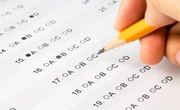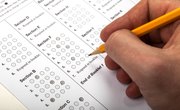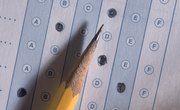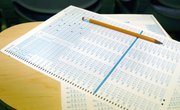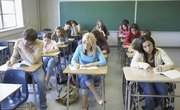Kids often dread bringing report cards home for a signature. By the time students reach higher education, there is a long list of assessments that define their success. In educational institutions, that success is measured by academic performance. This is how well a student meets standards set out by the local government and the institution itself. As career competition grows stronger in the workplace, the importance of students doing well in school has caught the attention of parents, legislators and government education departments. In the inverse, employers are also paying close attention to the education and student performance as well as they look to hire new graduates.
Significance
Although education is not the only road to success in the working world, much effort is made to identify, evaluate, track and encourage the progress of students in schools. Parents care about their child's educational performance because they believe good results will provide more career choices and job security. Schools, though invested in fostering positive habits for the same reason, are also often influenced by concerns about the school's reputation and the possibility of monetary aid from government institutions, which can hinge on the overall academic performance of the school. State and federal departments of education are charged with improving schools, and so devise methods of measuring success in order to create plans for improvement.
History
In the past, academic performance was often measured more by ear than today. Teachers' observations alone made up the bulk of the assessment. The summation or numerical method of determining how well a student is performing is a fairly recent invention that is used in conjunction with teacher evaluations of students. These grading systems came into existence in the United States in the late Victorian period and were initially criticized due to high subjectivity. Different teachers valued different aspects of learning more highly than others, and although some standardization was attempted in order to make the system more fair, the problem continued. Today, changes have been made to incorporate differentiation for individual students' abilities, and exploration of alternate methods of measuring performance is ongoing.
Function
The tracking of academic performance fulfills a number of purposes. Areas of achievement and failure in a student's school career need to be evaluated in order to foster improvement and make full use of the learning process. Results provide a framework for talking about how students fare in school and a constant standard to which all students are held. Performance results also allow students to be ranked and sorted on a scale that is numerically obvious, minimizing complaints by holding teachers and schools accountable for the components of every grade.
Features
Performance in school is evaluated in a number of ways. For regular grading, students demonstrate their knowledge by taking written and oral tests, performing presentations, turning in homework and participating in class activities and discussions. Teachers evaluate in the form of letter or number grades and offer comments to describe how well a student has done or back up the specific grade that was given. Additionally, in a written assignment, the teacher may also offer feedback and guidance on improving the writing. At the state level, students are evaluated by their performance on standardized tests geared toward specific ages and based on a set of achievements students in each age group are expected to meet.
Considerations
The subjectivity of academic performance evaluation has lessened in recent years, but it has not been totally eliminated. Fully removing subjectivity from the current evaluation methods may be difficult since many are biased toward students that respond best to traditional teaching methods. The students who do the best on standardized tests are those who excel in reading, mathematics as well as test-taking. Being able to take tests well is skill that is not, in itself, indicative of academic worth. The tests reward visual learners and give no chance for kinesthetic or auditory learners to show their abilities. The standardized test fails to recognize students with learning and physical disabilities that do not allow them to complete the test in the same manner or amount of time as other students. Although they give the most detailed information, evaluations from classroom teachers may still retain bias if individual differentiation and learning styles have not been considered as well.
Related Articles
References
Writer Bio
A writer with a Bachelor of Science in English and secondary education, but also an interest in all things beautiful, Melissa J. Bell has handed out beauty and fashion advice since she could talk -- and for the last six years, write for online publications like Daily Glow and SheBudgets.




